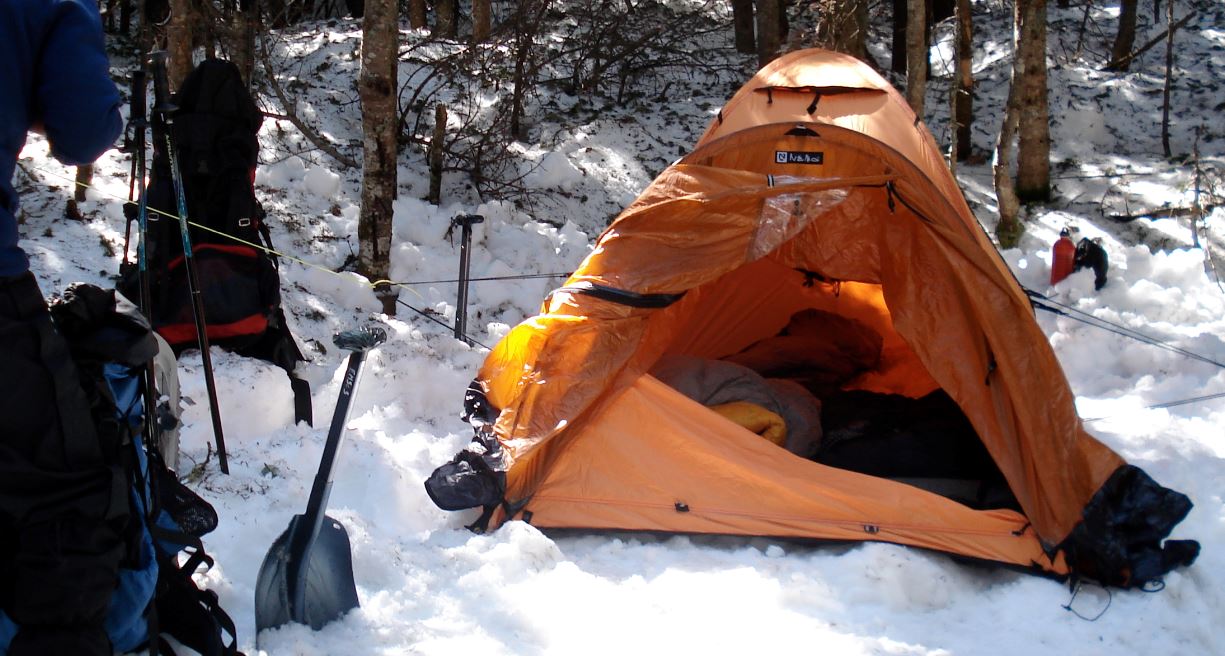
Snow camping requires a winter sleeping pad system that is both comfortable and warm.
Winter camping usually means sleeping on snow, which means you’re going to need a winter sleeping pad setup that blocks the cold beneath you from stealing away precious body heat. To accomplish this, you have two options. The first is to combine two summer-weight sleeping pads to create a double-layer of insulation. The second is to invest in a single pad that’s sufficiently warm for winter use. We’ll take a quick look at both, but we’ll first review a technical specification crucial to understanding the effectiveness of a cold-weather sleeping pad: R-values.
R-values 101
Every sleeping pad system has an R-value, which measures how much insulation a pad provides to fend off the cold coming from the ground beneath you. For winter camping, you generally want an R-value of at least 5, while three-season campers only need an R-value of 2 or more for most conditions. R-values are additive, so stacking two pads on top of each other provides an R-value that is more or less the sum of their individual R-values.
Most sleeping pads fall somewhere between an R value of two and five; this excellent and comprehensive list of 2018 sleeping pads from SectionHiker shows the full R-value range of currently available options.
One winter pad to rule them all?
Winter camping involves a lot more gear than three-season camping. Investing in a single winter-worthy pad helps keep that gear list in check, and minimizes the number of sleeping-related items you need to deal with or schlep around with you. Winter-worthy pads also tend to be extra thick and cushy to provide all that warmth, which can translate to a comfy night’s sleep that you might not otherwise enjoy.
Your options for cold-weather pads are relatively limited, however, especially if you want to invest in a pad that’s relatively compact and lightweight. They can also get pretty pricey, with some options approaching the $200 mark and beyond.
If you’re looking for the best deal on a winter pad, check out the 5.6 R-value REI Trekker ($70 – $80), though you’re trading price for a higher weight (40 – 51 ounces, depending on size). For a lightweight and compact option, consider the Therm-a-Rest NeoAir XTherm, weighing in at a scant 15 to 21 ounces, depending on size (5.7 R value, $200 – $240). The XTherm pad has received rave reviews, including this overview from Outdoor Gear Lab, which gave it an Editor’s Choice award. Finally, if you’re looking for maximum warmth and cush, Exped offers a wide range of super-thick and extra warm pads (pads start at $149 and go up from there).
Two is better than one
The alternative to buying a winter-specific sleeping pad is to double up two sleeping pads to create sufficient insulation beneath you. This is my preferred method, and one that is easier for intermittent winter campers who already have a summer-weight pad on hand.
In particular, I recommend the combination of one inflatable pad for comfort and one closed-cell foam pad for versatility. With this setup, the two pads won’t slip around against each other as sometimes happens when you combine two inflatable pads with slippery surfaces. But more importantly, this setup gives you the flexibility to use the closed-cell pad for around camp, under-your-butt use without fear of puncturing it with the many sharp objects—crampons, ice axes, and the like—that usually populate a winter camp.
My closed-cell go-to for years has been the Therm-a-Rest ZLite ($35 -$45, 14 ounces for a full-length, 2.2 – 2.6 R-value). Here’s my review of the ZLite from a few years ago. Coupling the ZLite or a similar pad with a lightweight inflatable pad with an R-value of around 3 provides sufficient insulation against the snow.
Stay warm out there!